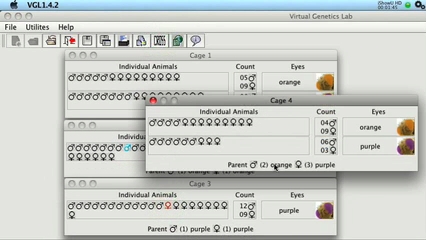In one EOC Biology practice exam, I found a problem that asked students the probability of offspring having a certain phenotype if two of the alleles in the parental cross were incompletely dominant. The question asked, "What is the probability of producing a white rose when a red rose and a pink rose are crossed?"
Identification of Task: The introduction would include a review of the definition of genotype, phenotype, allele, and dominant vs. recessive alleles, and present the problem of a test cross between two flowers whose phenotypes are known, but whose genotypes are unknown.
Generation of Data: The students could work in pairs to hypothesize and test their theories on types of dominance. Since it would be impractical and time consuming to actually perform these test crosses, a computer simulation website, such as Virtual Genetics Lab, could be utilized. A program such as this is a perfect example of how students can actively construct models by deciding which flowers to cross from which generations based on their supposed genotypes.

Production of Tentative Argument: The next phases would include pairs or groups using white boards to sketch out pedigrees of their test crosses from the VGL, which provides a visual aid, and constructing arguments on the answer to the questions presented at the beginning of the class. Virutal Genetics lab has problems to work out that include incomplete, complete, and codominance- the students could construct explanations defending their decisions about which problems display which type of dominance.
Argumentation, Investigation Report, and Peer Review: a good portion of the class time could be spent by students sharing their whiteboards and their explanations with other groups, which allows them to defend and critique each other's methods. For example, one group may perform several blind test crosses and interpret the results afterward, wheras another group might find it more efficient to true breed certain genotypes so that they are aware of homozygocity vs. heterozygocity before they perform the final test cross.
Peer review, revision, and reflective discussion: These steps are critical in an Argument Driven Inquiry model to ensure that all students understand the very complex concepts involved in the hereditary basis of genetics, such as dominance and probability.
No comments:
Post a Comment